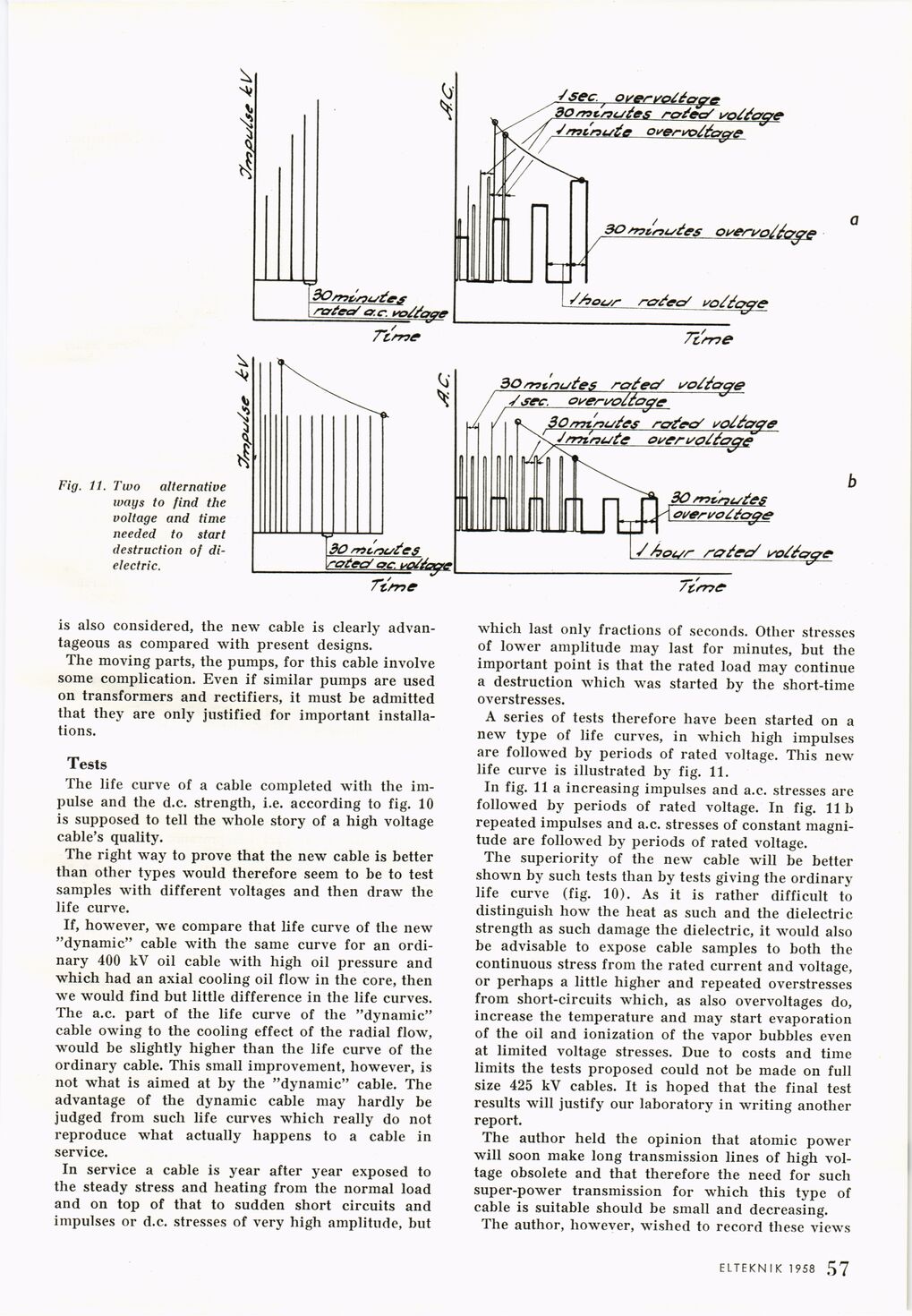
Full resolution (JPEG) - On this page / på denna sida - 1958, H. 4 - An Insulated Cable for Heavy Power Transmission, by Bror Hansson

<< prev. page << föreg. sida << >> nästa sida >> next page >>
Below is the raw OCR text
from the above scanned image.
Do you see an error? Proofread the page now!
Här nedan syns maskintolkade texten från faksimilbilden ovan.
Ser du något fel? Korrekturläs sidan nu!
This page has never been proofread. / Denna sida har aldrig korrekturlästs.
Fig. 11. Two alternative
ways to find the
voltage and time
needed to start
destruction of
dielectric.
is also considered, the new cable is clearly
advantageous as compared with present designs.
The moving parts, the pumps, for this cable involve
some complication. Even if similar pumps are used
on transformers and rectifiers, it must be admitted
that they are only justified for important
installations.
Tests
The life curve of a cable completed with the
impulse and the d.c. strength, i.e. according to fig. 10
is supposed to tell the whole story of a high voltage
cable’s quality.
The right way to prove that the new cable is better
than other types would therefore seem to be to test
samples with different voltages and then draw the
life curve.
If, however, we compare that life curve of the new
"dynamic" cable with the same curve for an
ordinary 400 kV oil cable with high oil pressure and
which had an axial cooling oil flow in the core, then
we would find but little difference in the life curves.
The a.c. part of the life curve of the "dynamic"
cable owing to the cooling effect of the radial flow,
would be slightly higher than the life curve of the
ordinary cable. This small improvement, however, is
not what is aimed at by the "dynamic" cable. The
advantage of the dynamic cable may hardly be
judged from such life curves which really do not
reproduce what actually happens to a cable in
service.
In service a cable is year after year exposed to
the steady stress and heating from the normal load
and on top of that to sudden short circuits and
impulses or d.c. stresses of very high amplitude, but
which last only fractions of seconds. Other stresses
of lower amplitude may last for minutes, but the
important point is that the rated load may continue
a destruction which was started by the short-time
overstresses.
A series of tests therefore have been started on a
new type of life curves, in which high impulses
are followed by periods of rated voltage. This new
life curve is illustrated by fig. 11.
In fig. 11a increasing impulses and a.c. stresses are
followed by periods of rated voltage. In fig. lib
repeated impulses and a.c. stresses of constant
magnitude are followed by periods of rated voltage.
The superiority of the new cable will be better
shown by such tests than by tests giving the ordinary
life curve (fig. 10). As it is rather difficult to
distinguish how the heat as such and the dielectric
strength as such damage the dielectric, it would also
be advisable to expose cable samples to both the
continuous stress from the rated current and voltage,
or perhaps a little higher and repeated overstresses
from short-circuits which, as also overvoltages do,
increase the temperature and may start evaporation
of the oil and ionization of the vapor bubbles even
at limited voltage stresses. Due to costs and time
limits the tests proposed could not be made on full
size 425 kV cables. It is hoped that the final test
results will justify our laboratory in writing another
report.
The author held the opinion that atomic power
will soon make long transmission lines of high
voltage obsolete and that therefore the need for such
super-power transmission for which this type of
cable is suitable should be small and decreasing.
The author, however, wished to record these views
ELTEKNIK 1958 1 57
<< prev. page << föreg. sida << >> nästa sida >> next page >>